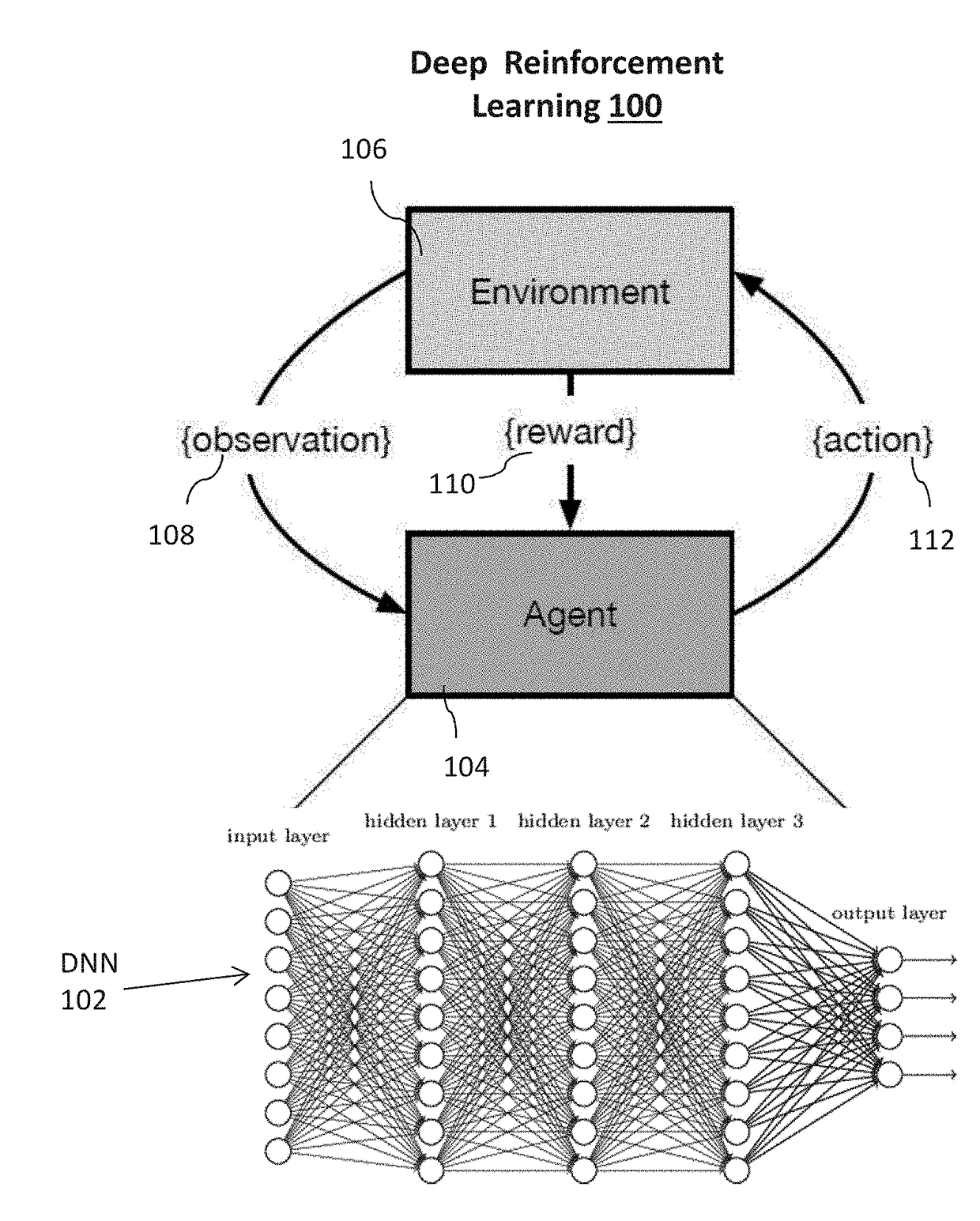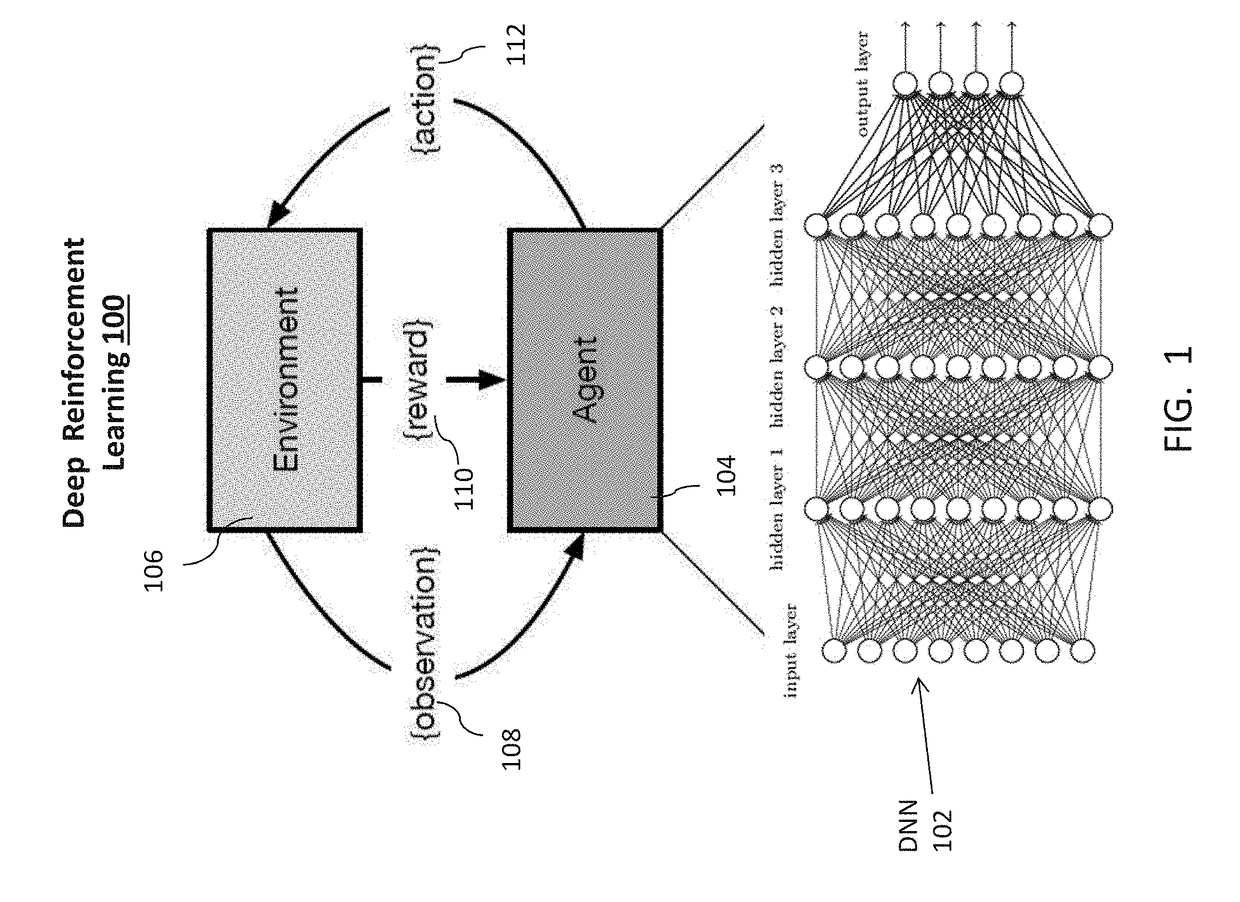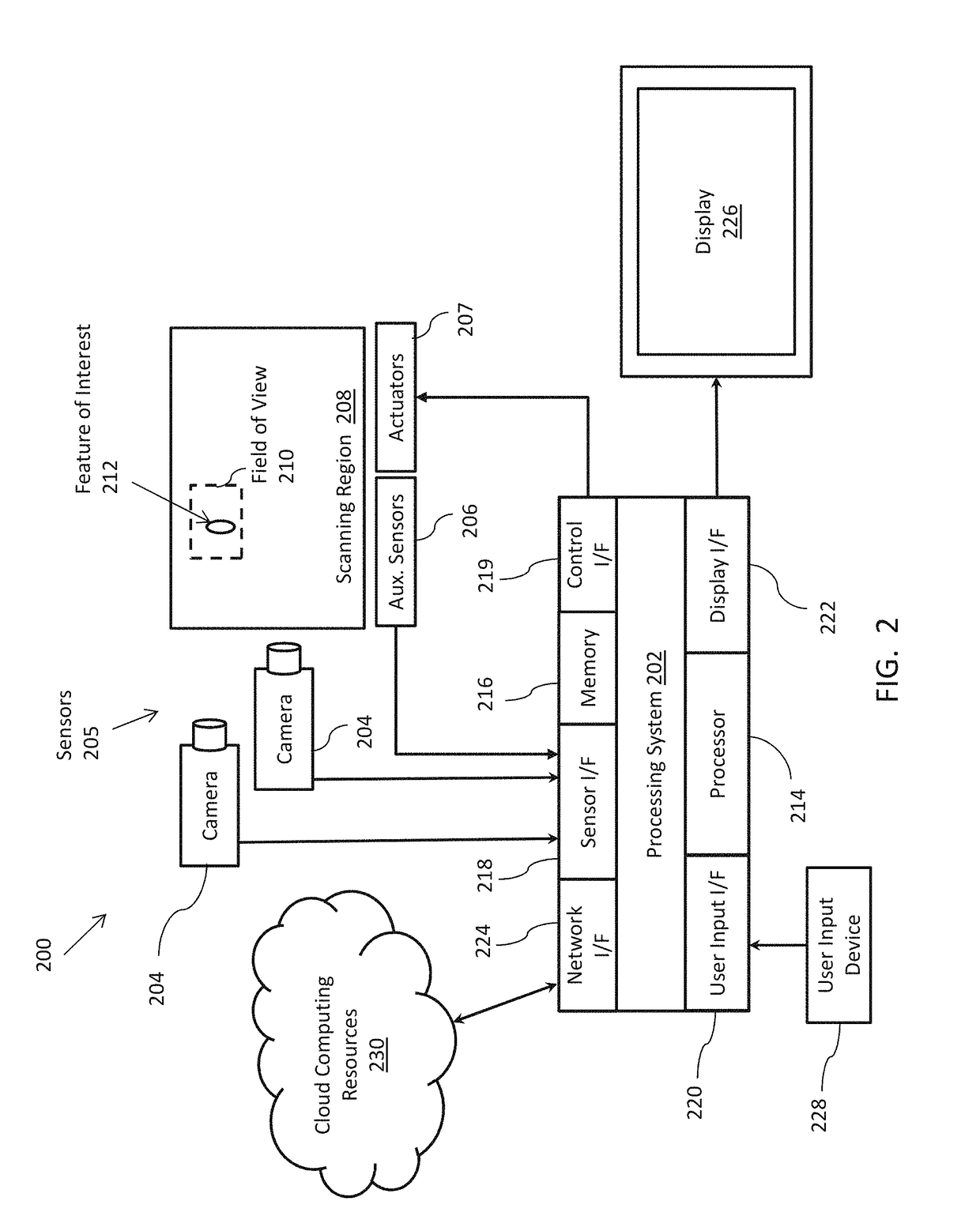Control systems using deep reinforcement learning
a control system and reinforcement learning technology, applied in adaptive control, process and machine control, instruments, etc., can solve the problems of limited application of powerful models like deep neural networks to control, high instability of gradients, and no learning approach is likely adequa
- Summary
- Abstract
- Description
- Claims
- Application Information
AI Technical Summary
Benefits of technology
Problems solved by technology
Method used
Image
Examples
Embodiment Construction
[0028]A detailed description of one or more embodiments of the disclosed systems and methods are presented herein by way of exemplification and not limitation with reference to the Figures. Embodiments use deep reinforcement learning for control system operation and optimization, as well as feature identification. Reinforcement learning (RL) can be used to learn to control agents from sensor outputs, such as speech or video. Deep reinforcement learning (DRL) can be used to actively to target problems that interact with the environment and learn by maximizing a scalar reward signal. Deep learning algorithms may require large amounts of labelled training data to generate a robust model that can be used for inference on testing data. RL algorithms learn from a scalar reward signal that is typically sparse, noisy and delayed. DRL can use a deep neural network (DNN), such as a convolutional neural network (CNN), a deep auto encoder such as a convolutional auto encoder (CAE), or other suc...
PUM
 Login to View More
Login to View More Abstract
Description
Claims
Application Information
 Login to View More
Login to View More - R&D
- Intellectual Property
- Life Sciences
- Materials
- Tech Scout
- Unparalleled Data Quality
- Higher Quality Content
- 60% Fewer Hallucinations
Browse by: Latest US Patents, China's latest patents, Technical Efficacy Thesaurus, Application Domain, Technology Topic, Popular Technical Reports.
© 2025 PatSnap. All rights reserved.Legal|Privacy policy|Modern Slavery Act Transparency Statement|Sitemap|About US| Contact US: help@patsnap.com



